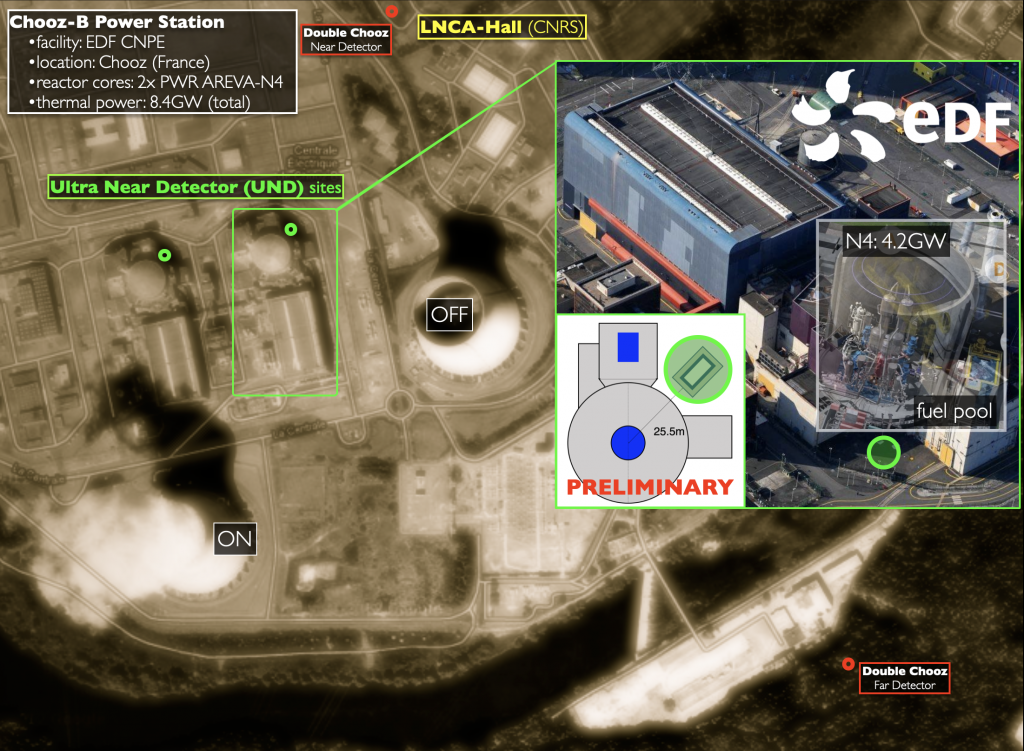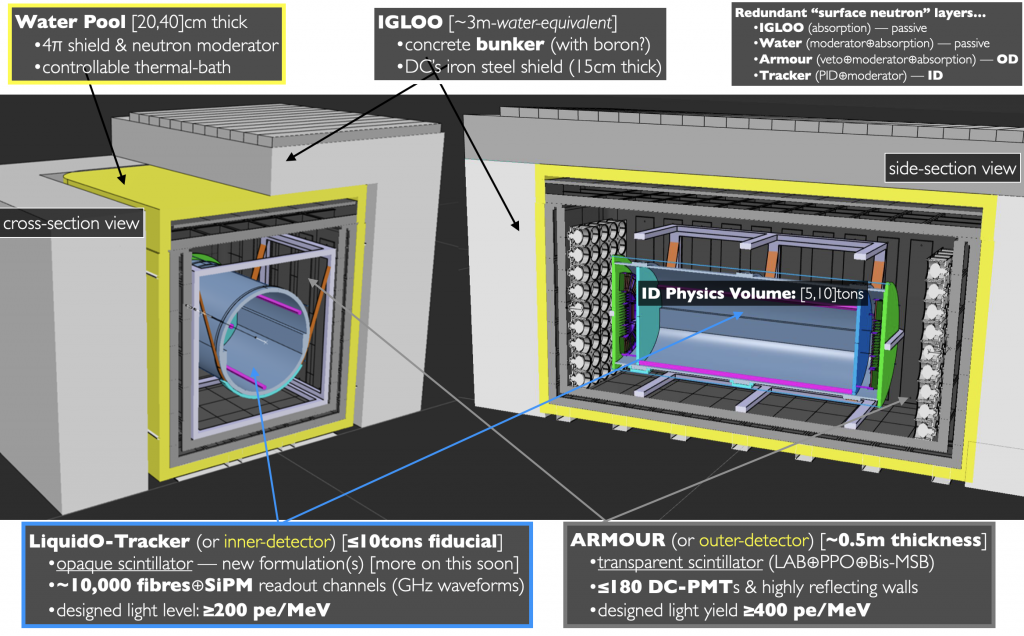The experimental setup of AntiMatter-OTech consists mainly of two main elements: our experimental site for antineutrino exposure and our new LiquidO-based detector. Both are uniquely made possible for this project for the first time, thus allowing our project to explore a uniquely powerful experimental setup to address the challenges and opportunities we are tasked with.
The main experimental site of the AntiMatter-OTech project is the ultra-near-detector (UND), located a few meters away from one of the buildings of the N4-PWR nuclear reactors of the EDF‘s Chooz-B. No experiment has ever been located before, despite much antineutrino fundamental research activity at the Chooz site since the 90s’. More details below.

The Chooz’s Ultra-Near-Detector Site
In some ways, our new UND at Chooz resembles the location of the Bugey neutrino experiments in the past. There are other sites very close to commercial nuclear reactors in the world. This, however, is becoming an extremely rare case in Europe. European sites close to research nuclear reactors, such as in ILL, are common. However, the fission output power of those reactors is much lower, so their antineutrino flux is typically ≥10x less. Moreover, from the innovation perspective, the ultimate goal of the AntiMatter-OTech project is to demonstrate its monitoring capabilities for commercial nuclear reactors first, in the most realistic conditions, so that direct TRL quantification is possible.
The support of the LNCA laboratory (CNRS), originally constructed for the Double Chooz experiment within the perimeter of the Chooz nuclear reactor plant, is of critical logistical utility for the AntiMatter-OTech. However, unfortunately, this site is located too far (~400m away) for practical interest since the neutrino flux is lower by a factor ≥100x. Regarding the antineutrino flux alone, 1 day’s worth of data at the UND is equivalent to ~3 months at the LNCA. Moreover, LNCA-based physics studies were successfully accomplished several years ago by the Double Chooz experiment. Actually, it is that information the “pre-history” of our project, as it demonstrates and allows us to quantify easily the potential of the AntiMatter-OTech scientific and innovation programmes. Namely, Double Chooz, after many years of running, holds the world’s best precision in the reactor antineutrino flux today [Nature Physics, arXiv]. Instead, AntiMatter-OTech is expected to have a comparable world’s precision in about one week’s worth of data, should the background rejection control be assured as planned.
The AntiMatter-OTech Detector
An illustration of today’s vision of our detector is found below. Explanations in the image itself.

This page is still under construction.
